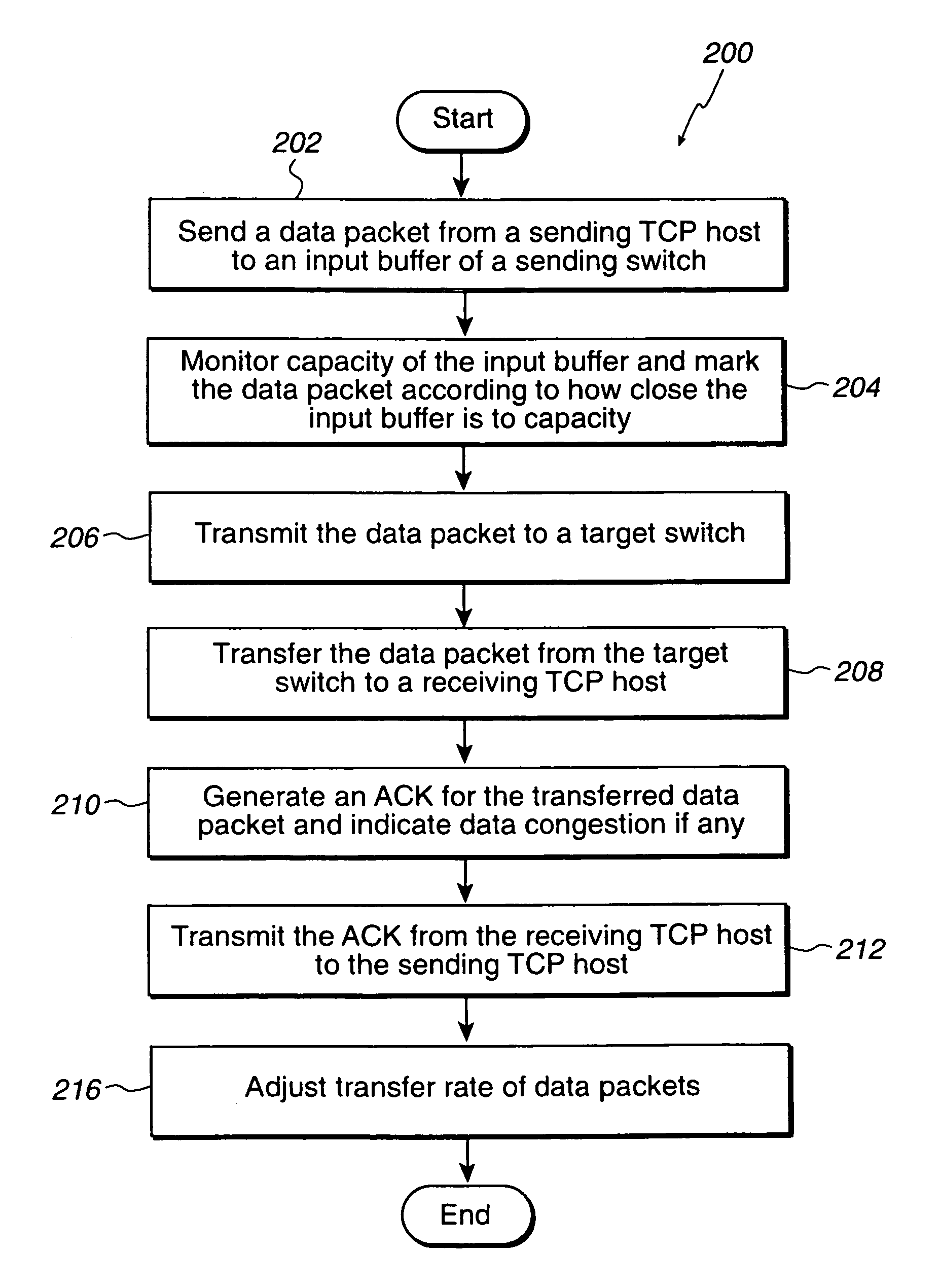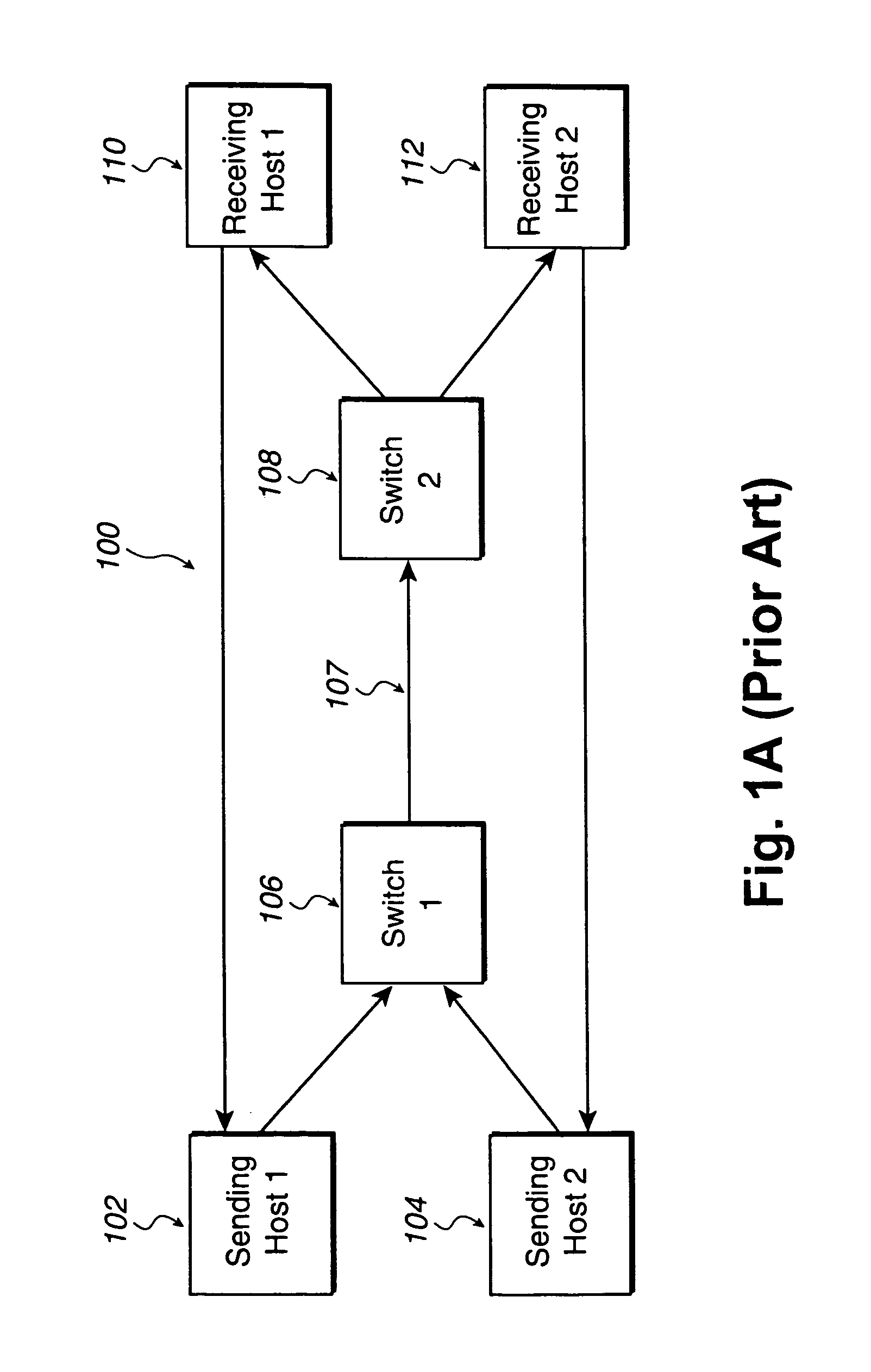Congestion control for internet protocol storage
a technology of internet protocol storage and congestion control, applied in the field of computing technology, can solve the problems of increasing the delay of data transfer, slow start mechanism quickly hitting the capacity limit of the network, and the attempt of tcp to minimize congestion while maintaining an optimal data transfer rate is not very successful, so as to reduce the congestion of internet protocol storag
- Summary
- Abstract
- Description
- Claims
- Application Information
AI Technical Summary
Benefits of technology
Problems solved by technology
Method used
Image
Examples
Embodiment Construction
[0035]An invention is described for computer implemented methods for reducing congestion in data transfer systems and internet protocol storage. In addition, the described methods may be used to reduce congestion in any form of data transfer protocol. It will be obvious, however, to one skilled in the art, that the present invention may be practiced without some or all of these specific details. In other instances, well known process operations have not been described in detail in order not to unnecessarily obscure the present invention.
[0036]In order to solve the problems of the prior art, the present invention utilizes an intelligent and efficient data transfer protocol to reduce the unnecessary overcompensation of data transfer rates during data transfer congestion and thereby optimize data throughput. It should be appreciated that the present invention may be utilized in any data transfer protocol where data congestion needs to be minimized while optimizing data transmission, su...
PUM
 Login to View More
Login to View More Abstract
Description
Claims
Application Information
 Login to View More
Login to View More - R&D
- Intellectual Property
- Life Sciences
- Materials
- Tech Scout
- Unparalleled Data Quality
- Higher Quality Content
- 60% Fewer Hallucinations
Browse by: Latest US Patents, China's latest patents, Technical Efficacy Thesaurus, Application Domain, Technology Topic, Popular Technical Reports.
© 2025 PatSnap. All rights reserved.Legal|Privacy policy|Modern Slavery Act Transparency Statement|Sitemap|About US| Contact US: help@patsnap.com



